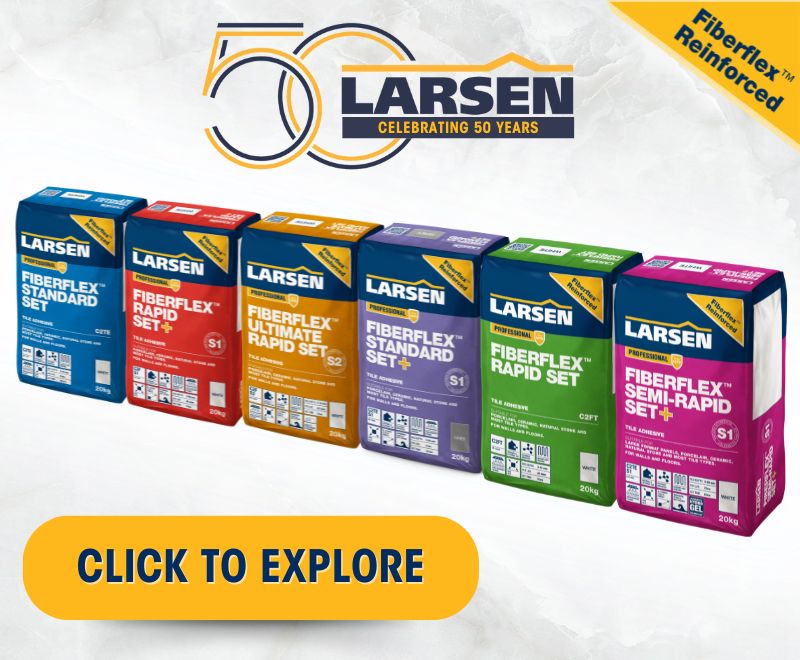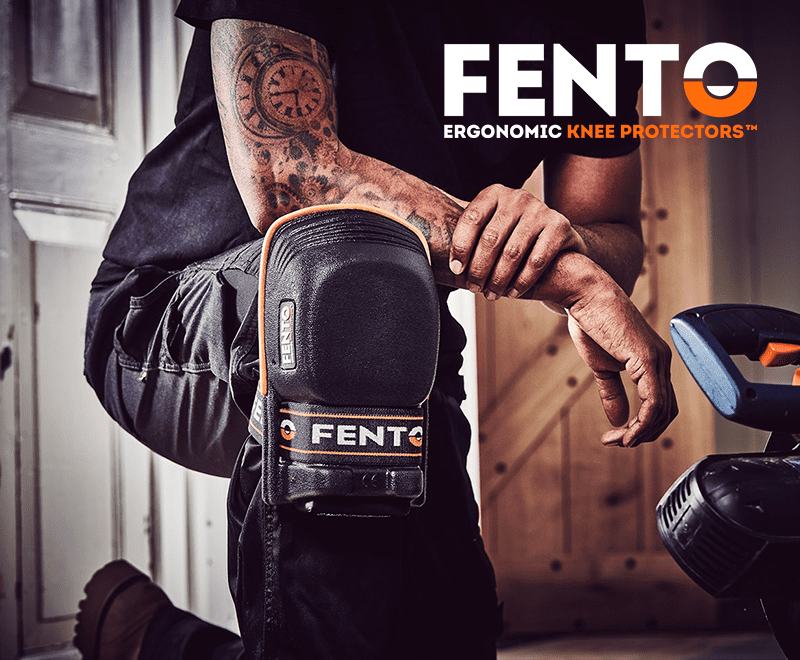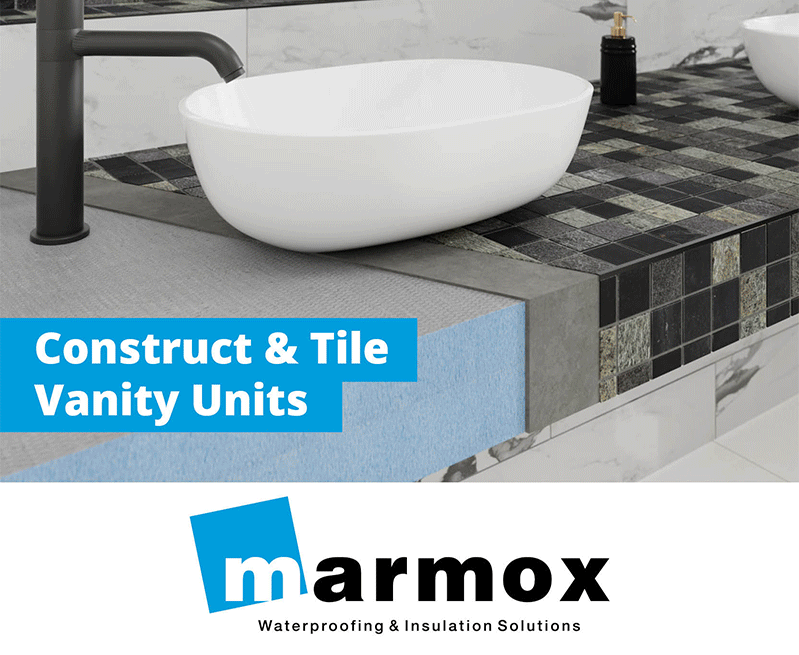Matthew Mowforth, ARDEX Group UK training and technical support manager, elaborates on making sure correct protections are put in place to ensure that moisture doesn’t become an issue
Many of the problems that occur with tiling are as a result of moisture in the subfloor, or failure to protect backgrounds from water ingress.
It’s always good to remember that cementitious adhesives and grouts are themselves not waterproof and can be affected by the passage of water from below or from above.
It’s therefore essential the right protections are put in place through the correct substrate and background protection, to ensure that water doesn’t become an issue.
There are several things which need to be considered which we will explore further in this article including subfloor drying times, controlling subfloor moisture and damp, and the installation of tanking systems in wet areas.
Subfloor drying times
Research has shown that under ideal conditions, a screed up to 50mm thick will take approximately one day per mm to dry.
For concrete, at least six weeks should be allowed for initial drying shrinkage, sand and cement screeds three weeks minimum, while anhydrite screeds can vary – typically it’s 1mm per day up to 40mm, thereafter two days per mm.
However, it’s essential to check with the manufacturer for drying times and any required moisture levels. Correct moisture checks or tests should be carried out before tiling commences.
The commissioning of underfloor heating in certain screeds prior to tiling installation can enhance drying times, as can the removal of laitance from anhydrite – which is also critical to ensure good bonding.
Our national training and technical support team can assist with free moisture testing to ensure the levels are suitable for the application of levellers or direct tiling.
Damp proof membranes
However, time scales in many projects don’t allow for lengthy drying times, so sufficient time isn’t left for the construction moisture in the subfloor to dry out.
This is where a surface damp proof membrane can come in handy, as they’re suitable for the highest measurable levels of moisture content (up to 98% RH in certain backgrounds), cutting down on drying times.
A surface damp proof membrane will protect levellers and tile adhesives against residual construction moisture and continual rising vapour. They can also be used where a structural damp proof membrane isn’t present or is ineffective.
This is likely to be the case in refurbishment projects involving buildings constructed before 1970, where the installation of an effective structural damp proof membrane wasn’t a requirement of the building regulations.
Don’t overlook the need for DPMs when tiling, as rising moisture can cause staining of the grout, or in worst case scenarios failure of the tiled systems.
Adhering to saturated concrete at lower temperatures or even cementitious heated screeds, ARDEX damp proof membranes offer quick and effective moisture control, plus they can be levelled from as little as four hours or tiled on (with a sand blinded epoxy primer).
When tiling we would recommend the application of a grit primer on top of the DPM, before direct tiling, or the application of a moisture resistant levelling compound.
Please refer to all datasheets before installation.
Waterproofing and tanking
Remember adhesives and grouts aren’t waterproof, only water resistant. This is particularly important to consider when tiling in wet areas such as wet rooms, showers, bathrooms and full immersion such as swimming pools.
While British Standards have always supported waterproofing in commercial wet areas, in 2018 a new clause to BS 5385-1 introduced guidance for waterproofing domestic wet areas.
Under the new provision any domestic showers, bathroom or other wet areas must have a suitable tanking membrane fitted first.
A wet area is considered to be any wet room, bathroom, shower area, steam room or any other location that’s subjected to frequent water contact. This means it isn’t just wetrooms that must have tanking membranes.
New NHBC tanking guidance for new build homes must also be considered. Because they’re water resistant, not waterproof, over times, water will be absorbed from above through the grout joints and adhesive bed and into the underlaying substrates.
If the substrates aren’t protected with an appropriate tanking system at the right thickness, this can lead to damp and mould issues.
Of course, the longer this goes on, the worse the damage can get, and ultimately, this can lead to tiles debonding or failure. Water damage and ingress can spread to adjoining rooms or even adjacent properties.
Bear in mind, with the new standards in place, contractors can be held accountable for repairs in domestic areas, as they are for commercial locations.
So the question should be, do you want to run the risk of failures and potential damage, or just spend a few extra pounds on a quality tanking system?
01440 714939
info@ardex.co.uk
www.ardex.co.uk











